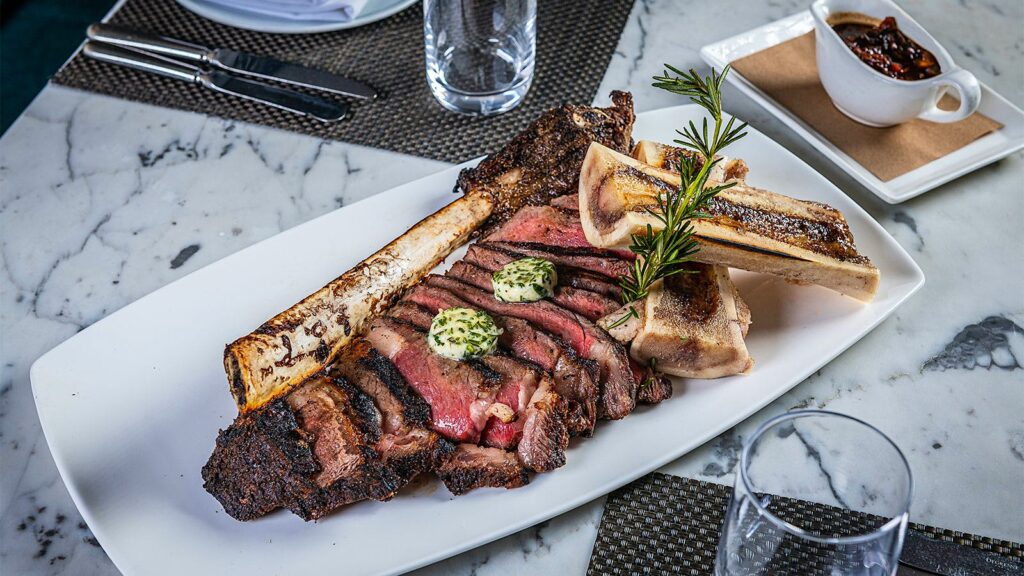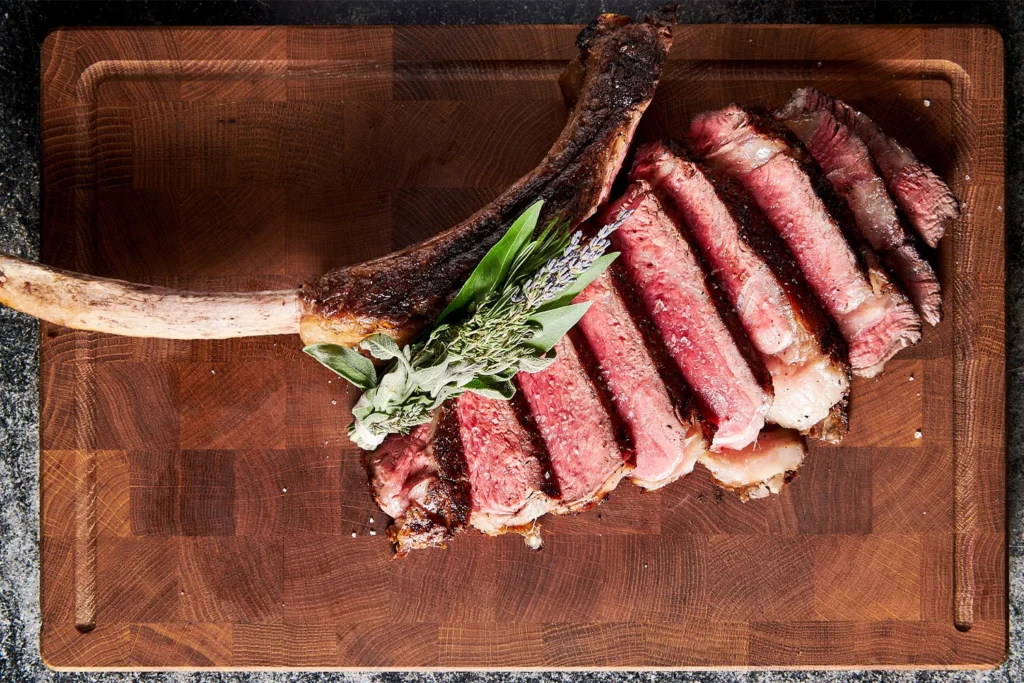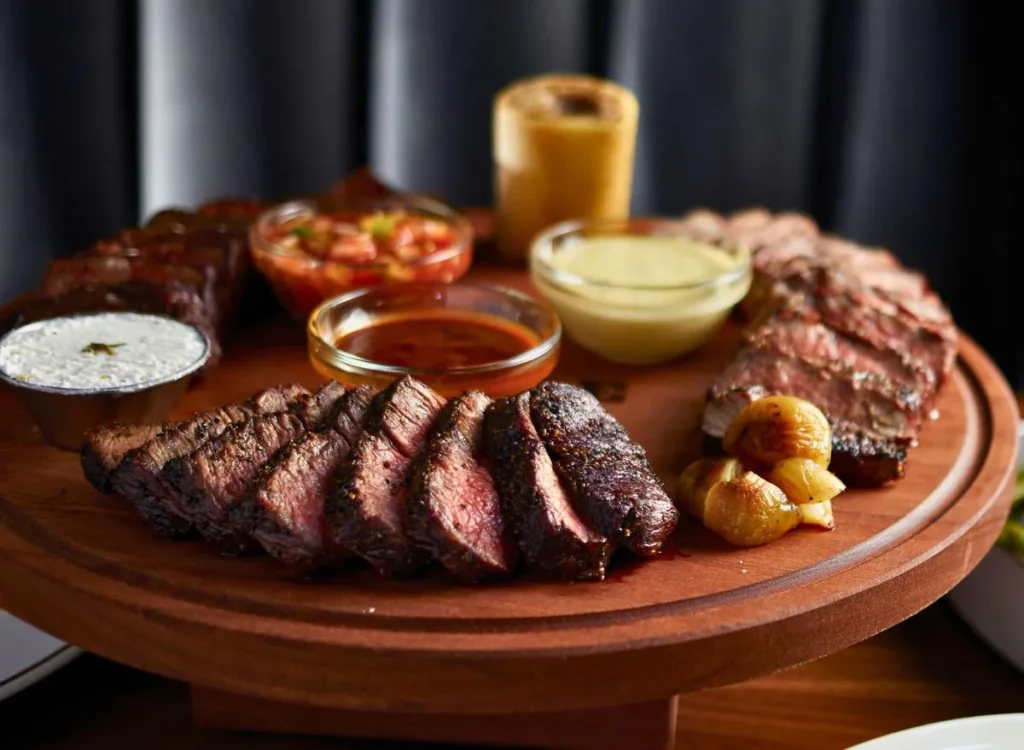In the ever-evolving culinary world, a riveting transformation is underway within the realm of steakhouses, traditionally known for their robust and classic flavours. This change is marked by the introduction of international tastes, a trend that marries the revered traditions of steakhouse cuisine with a bold array of global influences. This fusion results in a dynamic and vibrant reinterpretation of the steakhouse experience, lending a unique and modern twist to the conventional. As we delve into this trend, we uncover how chefs are incorporating diverse culinary elements from Asia, Latin America, the Mediterranean, and beyond, revolutionizing the way we perceive and savour their usual offerings. This journey is not just about the novelty of flavours but also reflects the changing preferences of a globally-aware and adventurous clientele. It’s a testament to how culinary borders are expanding, making the steakhouse menu a canvas for creativity, innovation, and global gastronomic exploration.
The Evolution of the Steakhouse & Fusion Cuisine

Source: winespectator.com
Traditionally, steakhouses have been bastions of classic, hearty fare, primarily focusing on high-quality meats with a selection of standard sides. However, as our world becomes increasingly interconnected, so do our palates. The modern steakhouse is breaking from this tradition, incorporating a plethora of international flavours that complement and enhance the classic steakhouse experience. This evolution reflects not only changing consumer tastes but also the global journey of culinary discovery.
Fusion cuisine, once a buzzword, is now a staple worldwide. It represents a creative amalgamation of culinary traditions from different cultures, producing something unique and extraordinary. In steakhouses, this translates to the incorporation of ingredients, techniques, and flavours from across the globe, offering a dining experience that is both familiar and thrillingly new.
Asian Influence: Umami and Beyond
One of the most prominent influences in contemporary steakhouses is Asian cuisine. This isn’t just about adding a soy sauce glaze; it’s about embracing the depth of umami flavours. Asian marinades, spices, and cooking techniques are being skillfully integrated into steak preparations. Ingredients like miso, sesame, ginger, and lemongrass are being used to create marinades and sauces that elevate the flavour profile of traditional steak dishes.
Latin American Twist: Heat and Zest

Source: insidehook.com
Latin American cuisine brings its zest and heat to the steakhouse menu. Chimichurri sauce, a staple in Argentinean cooking, has found a home in many steakhouses, offering a fresh, herbaceous counterpoint to rich meats. Similarly, Mexican spices and rubs, incorporating elements like chipotle and cumin, are being used to add depth and warmth to steak dishes.
Mediterranean Infusions: Fresh and Aromatic
Mediterranean cuisine, known for its emphasis on fresh, high-quality ingredients, is also making its mark. Ingredients like olive oil, rosemary, thyme, and garlic are being used to impart a light, aromatic quality to steaks. This influence also extends to side dishes, with an increased presence of Mediterranean vegetables and grains.
African and Middle Eastern Elements: Exotic and Rich
The bold and rich flavours of African and Middle Eastern cuisines are also being explored in steakhouses. Spices such as sumac, za’atar, and harissa offer an exotic twist, introducing diners to a new spectrum of flavours. These cuisines also contribute a variety of new side dishes and condiments, adding diversity to the traditional steakhouse offerings.
The Role of Chefs: Artists and Innovators

Source: eatthis.com
Now that we have discussed the influence of a variety of global flavours, let’s look closer at the driving force behind this trend – the chefs themselves. They are the artists, constantly experimenting with new combinations, pushing boundaries, and challenging the status quo of the traditional steakhouse menu. Their travels, experiences, and personal heritage play a significant role in how they fuse different culinary elements.
Additionally, it is important to note that incorporating international flavours doesn’t mean overlooking local produce. Chefs at modern steakhouses are also finding ways to blend global influences while prioritizing sustainability and local sourcing. This approach not only supports local communities but also ensures the freshness and quality of the ingredients.
Conclusion: The Future of Steakhouses
The infusion of international flavours into steakhouse menus is more than a trend; it reflects our dynamic and multicultural world. It represents a culinary landscape that is constantly evolving, where the discovery of new flavours and experiences is endless. As we move forward, the steakhouse will continue to be a place where tradition meets innovation, where the familiar is reimagined with global influences, promising a dining experience that is both comforting and exhilarating. In this fusion, we find not just the future of steakhouses, but the future of dining itself – diverse, adventurous, and unapologetically bold.
